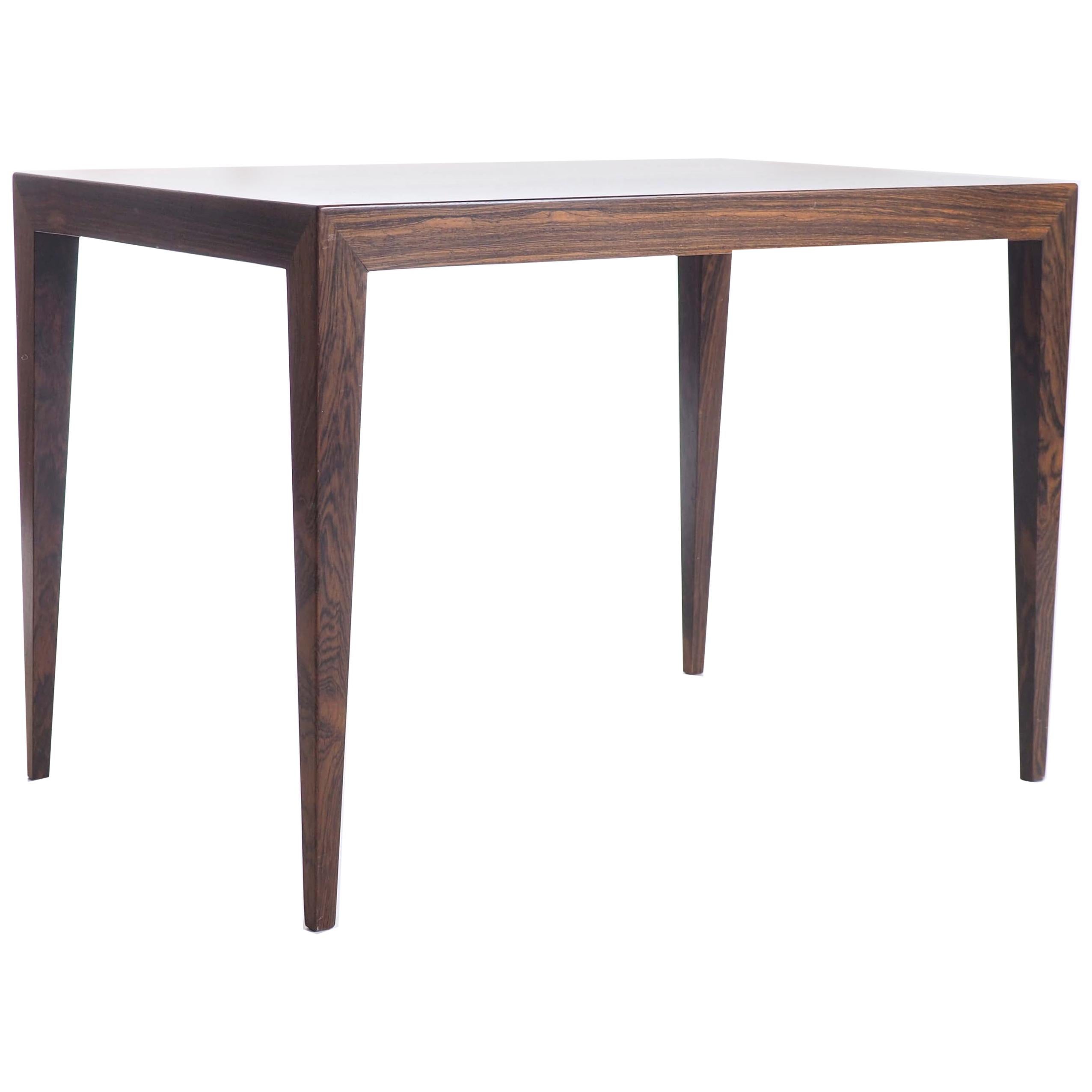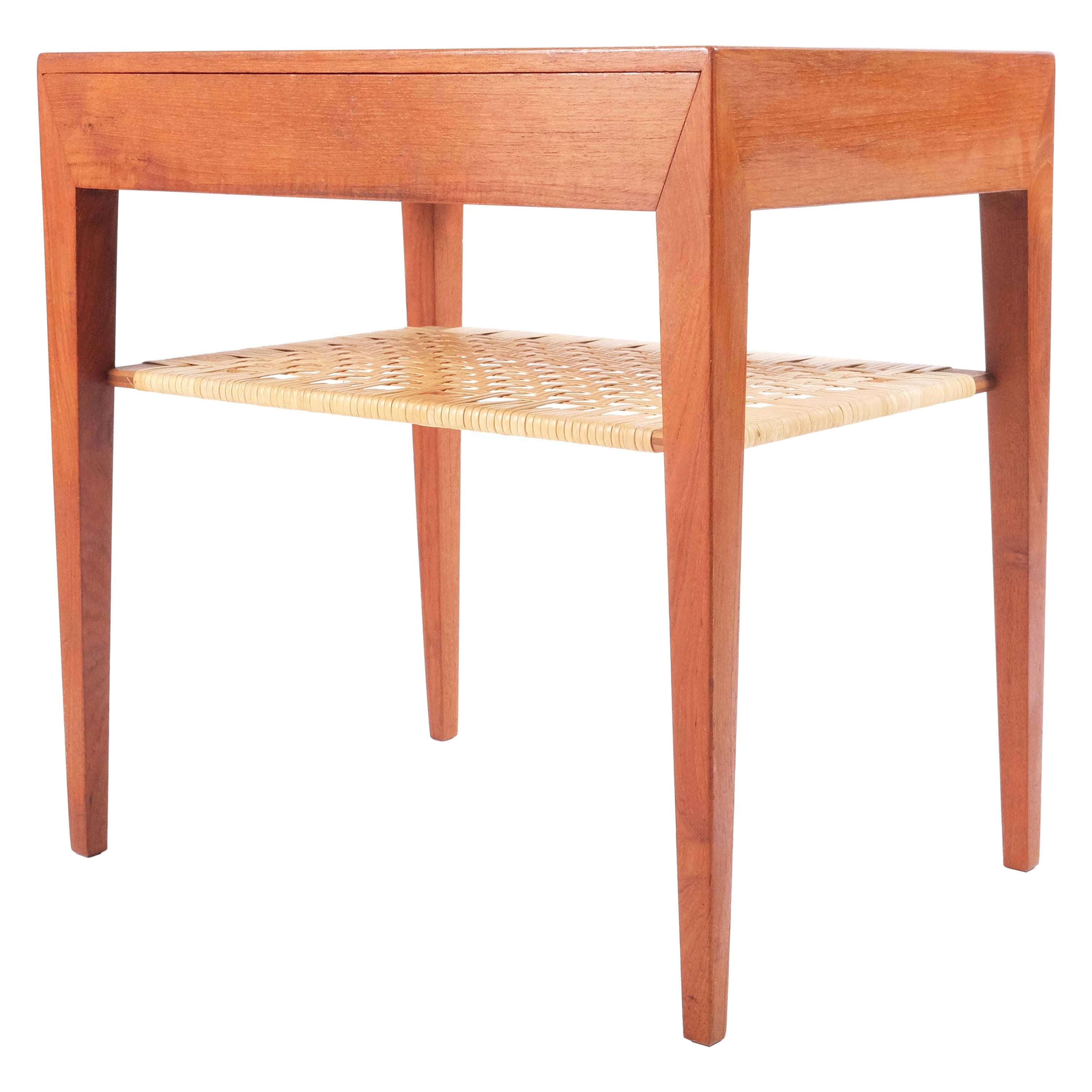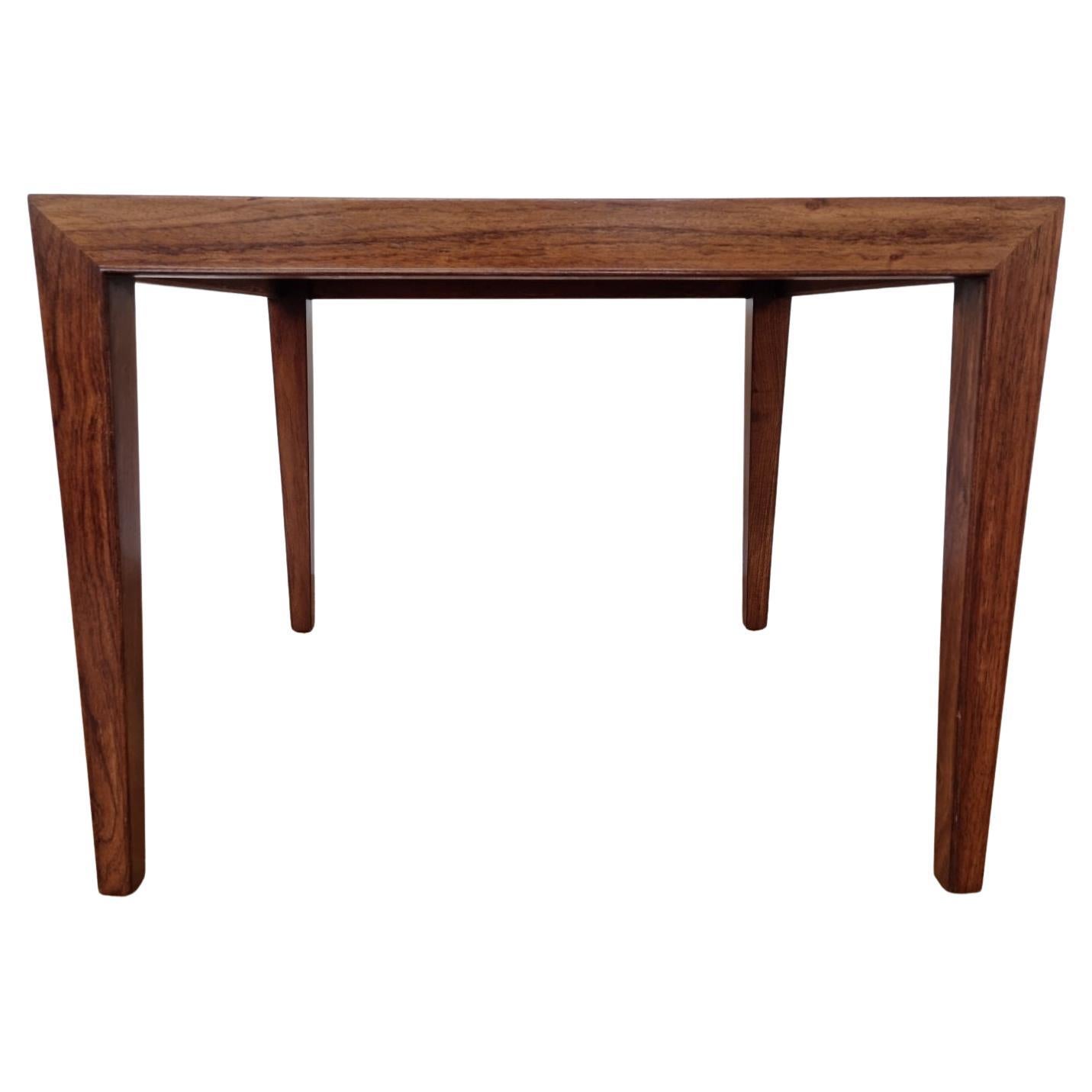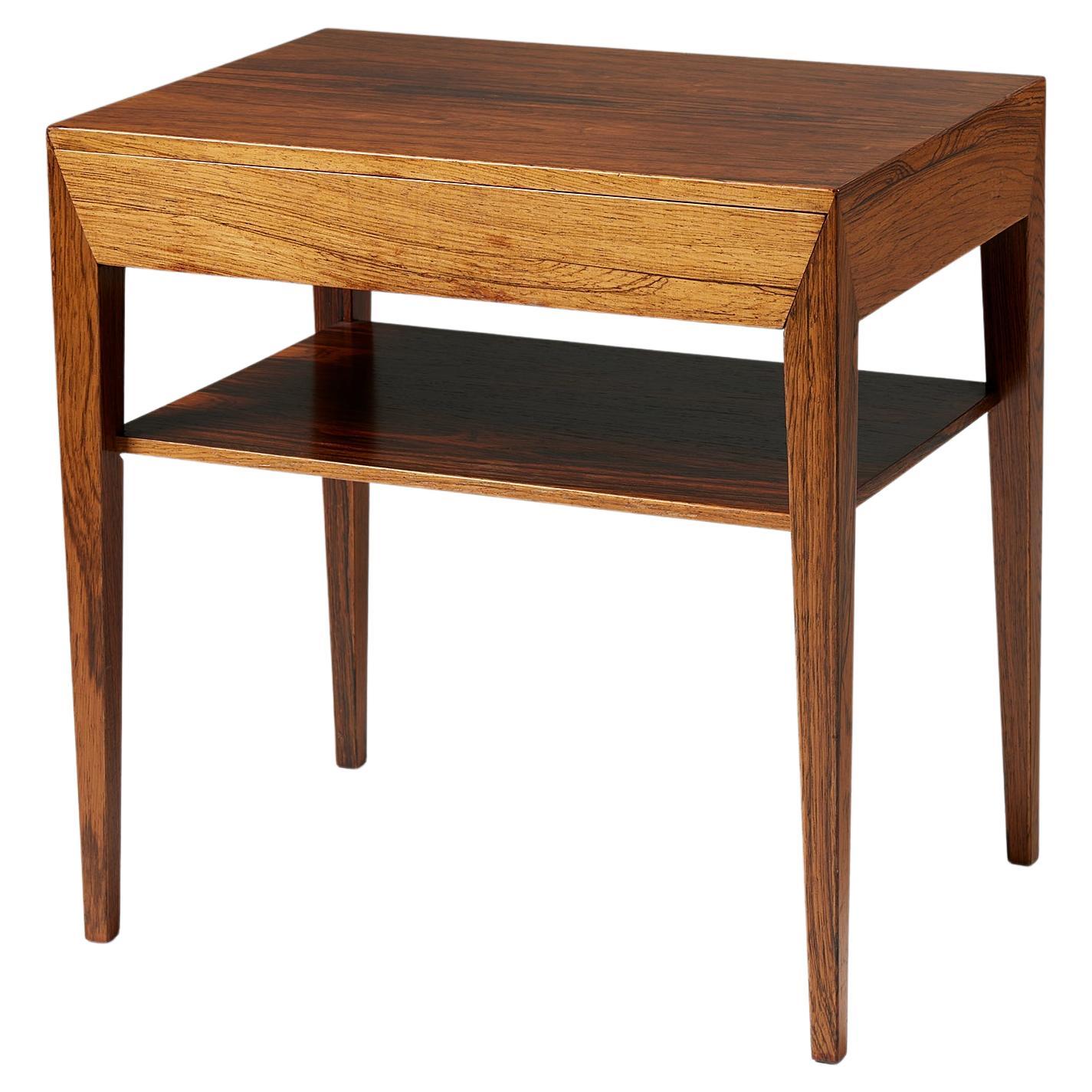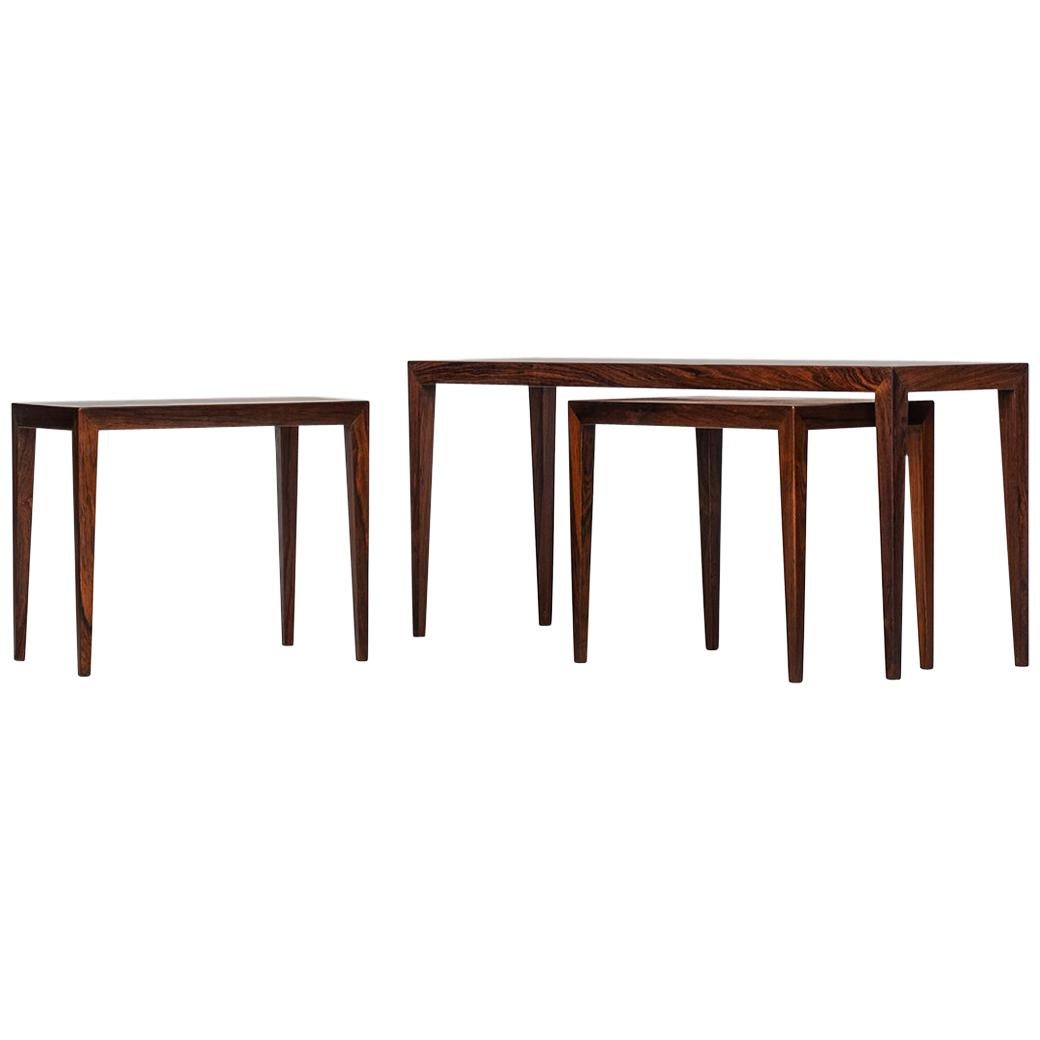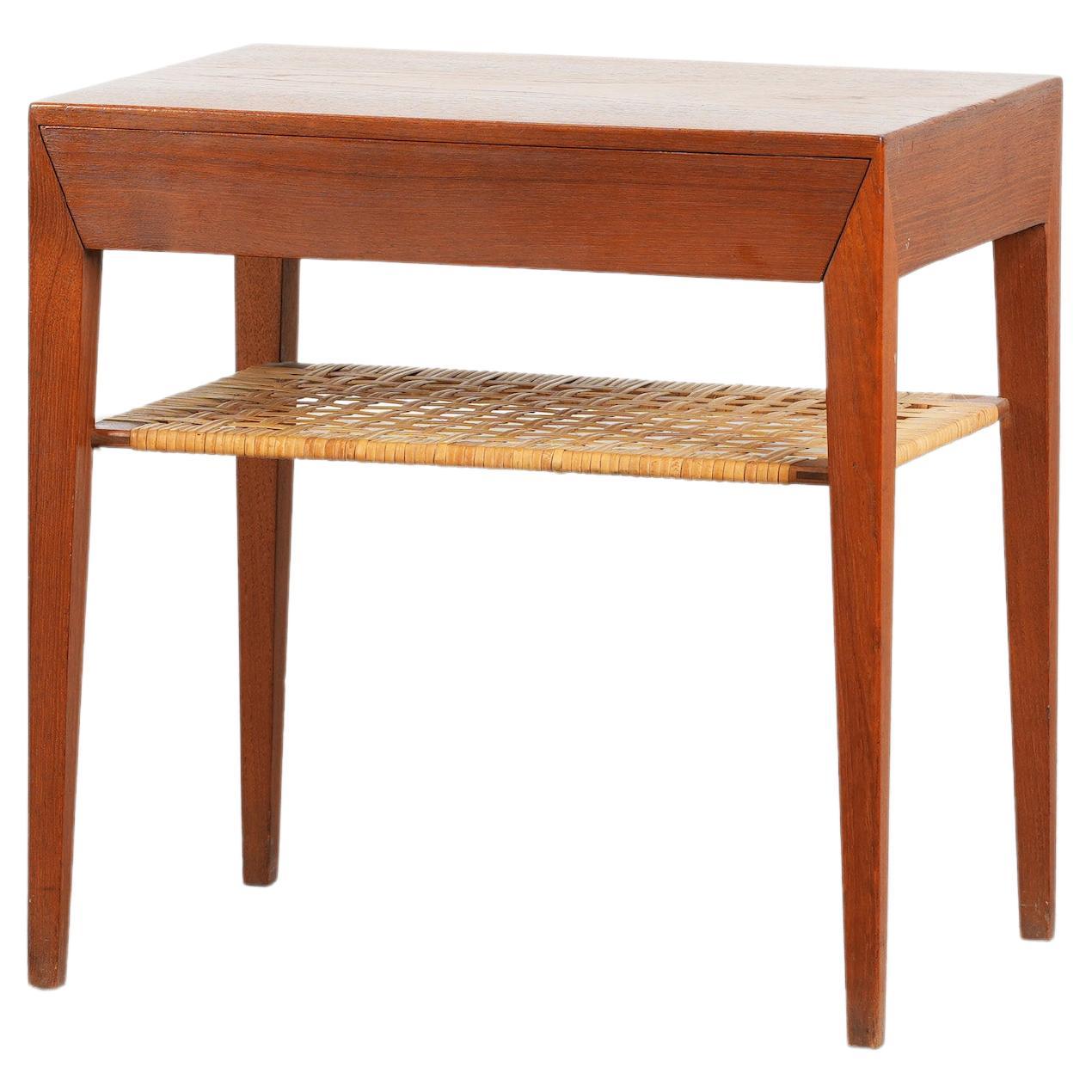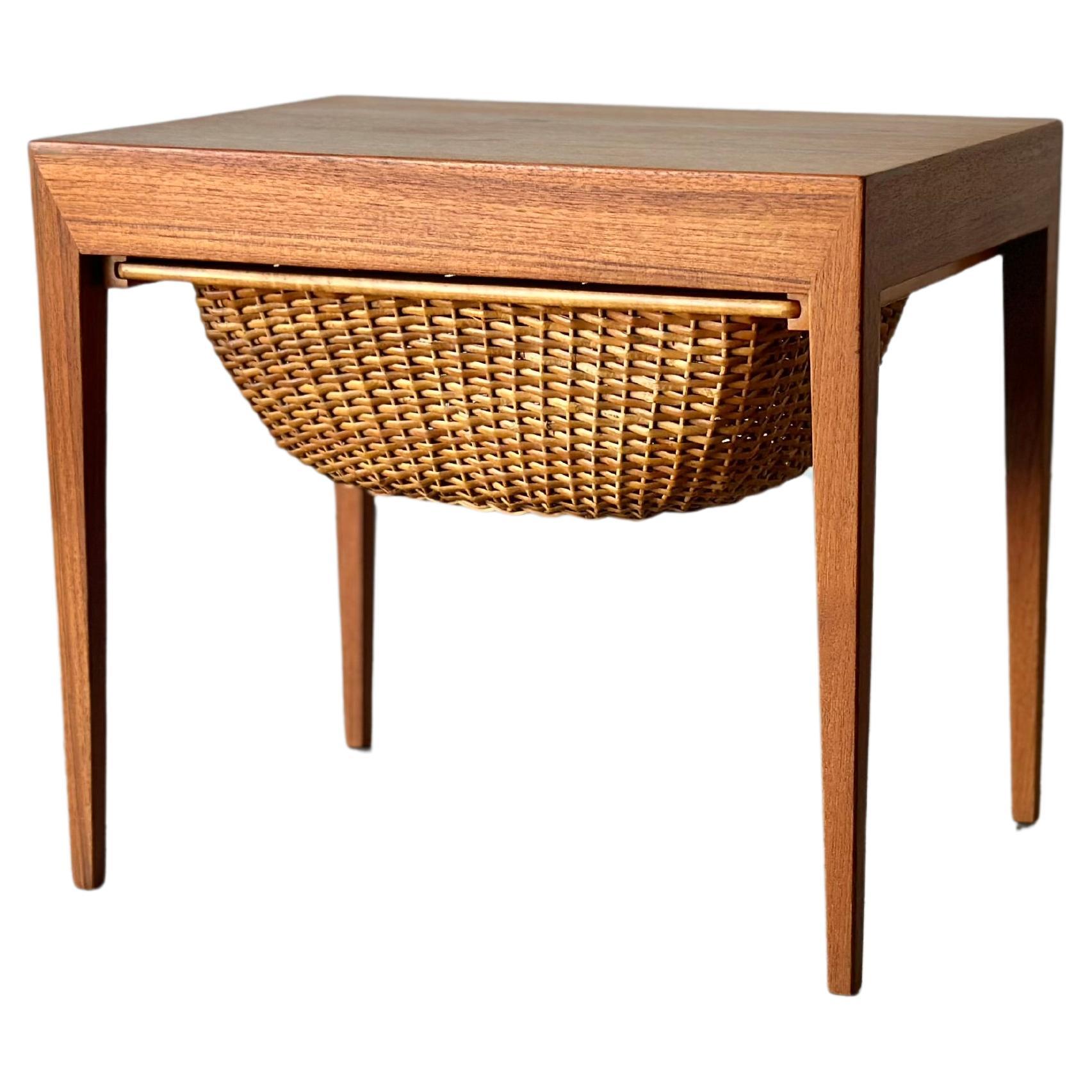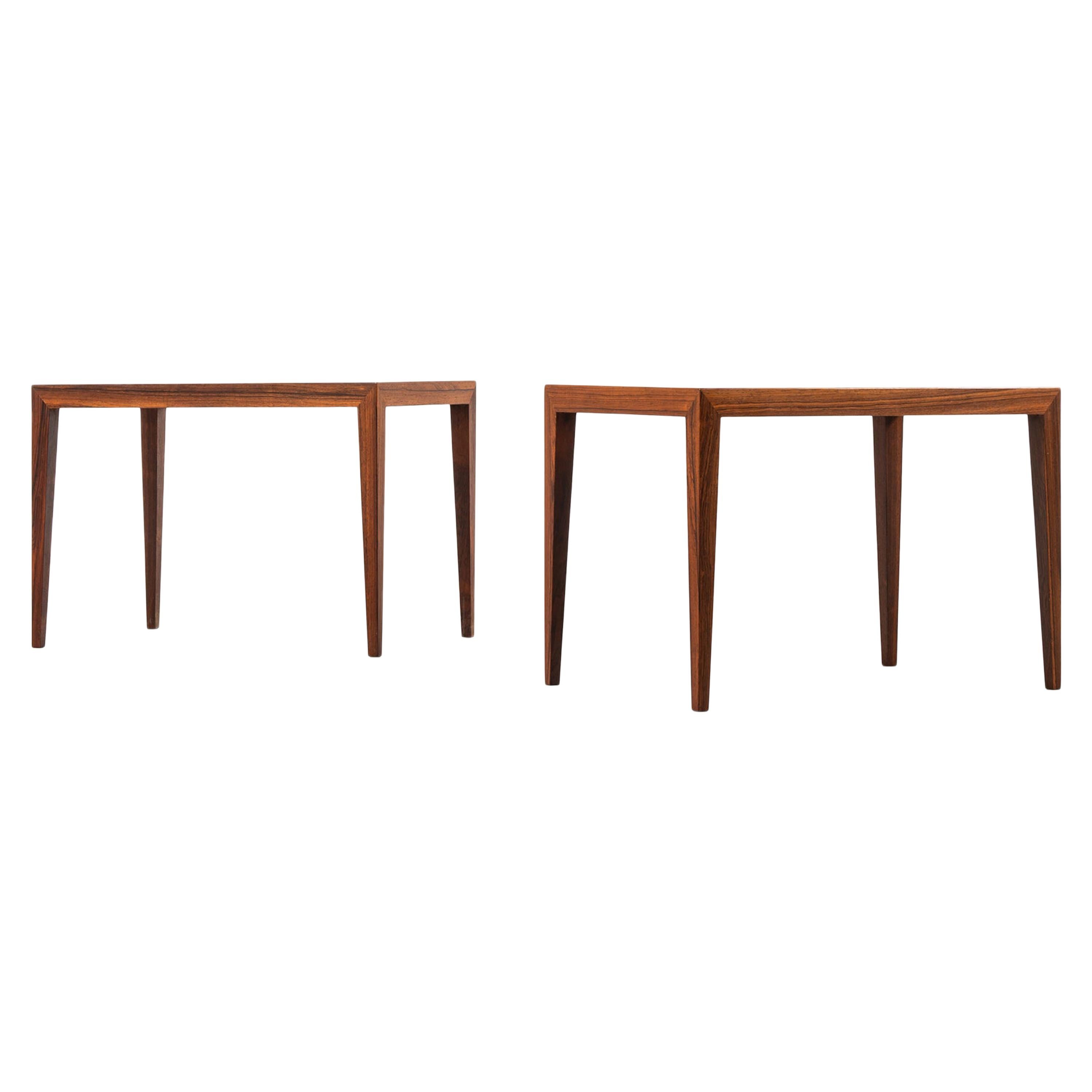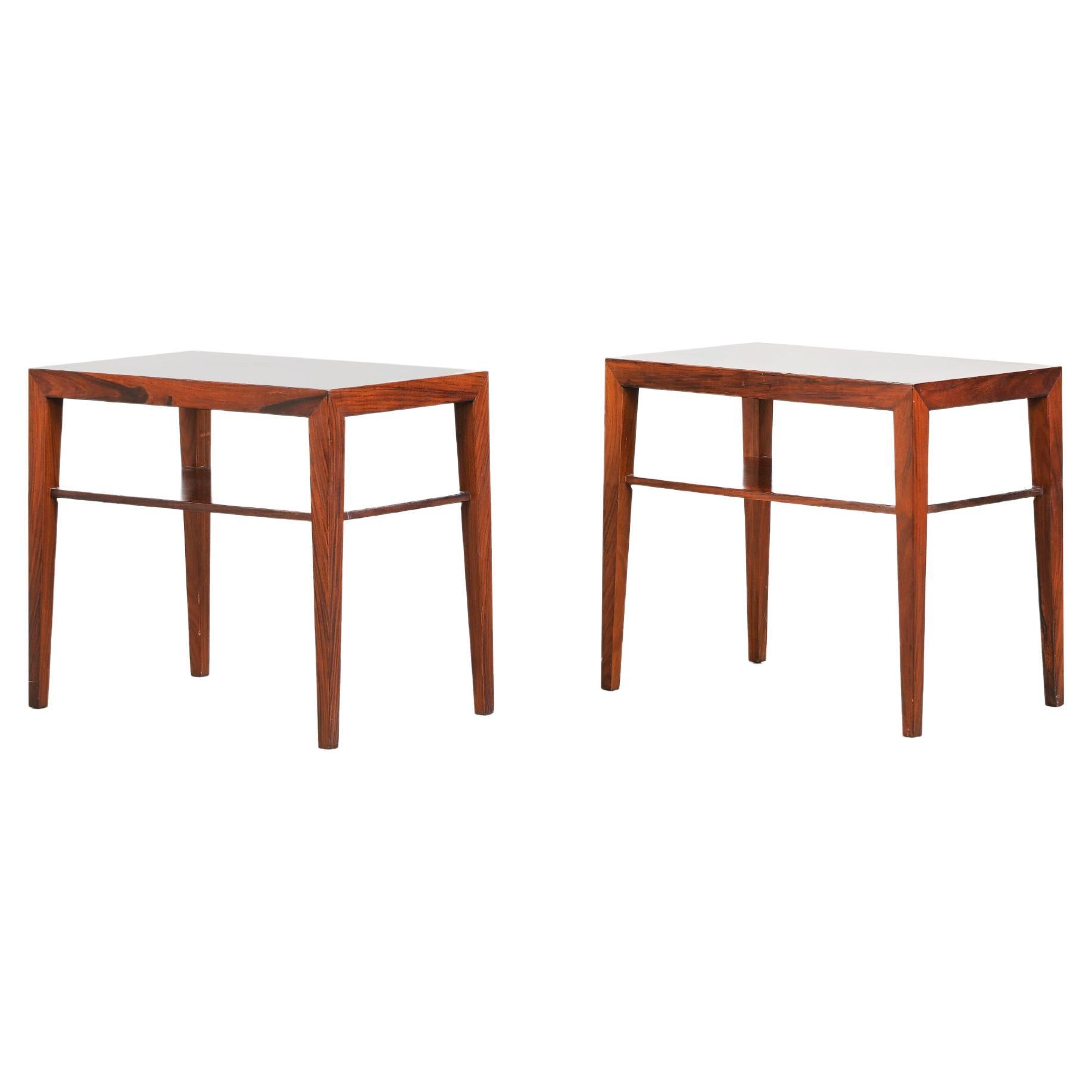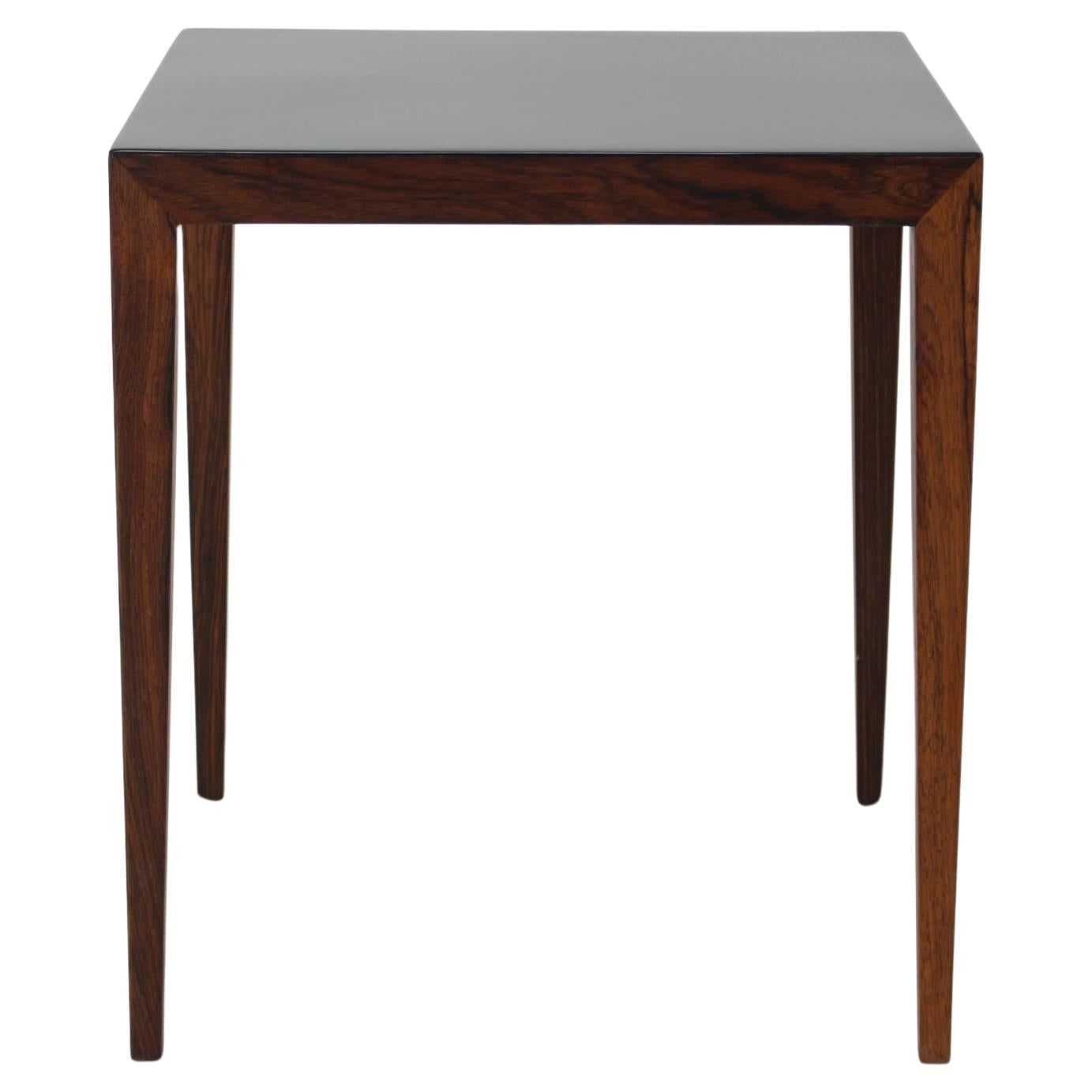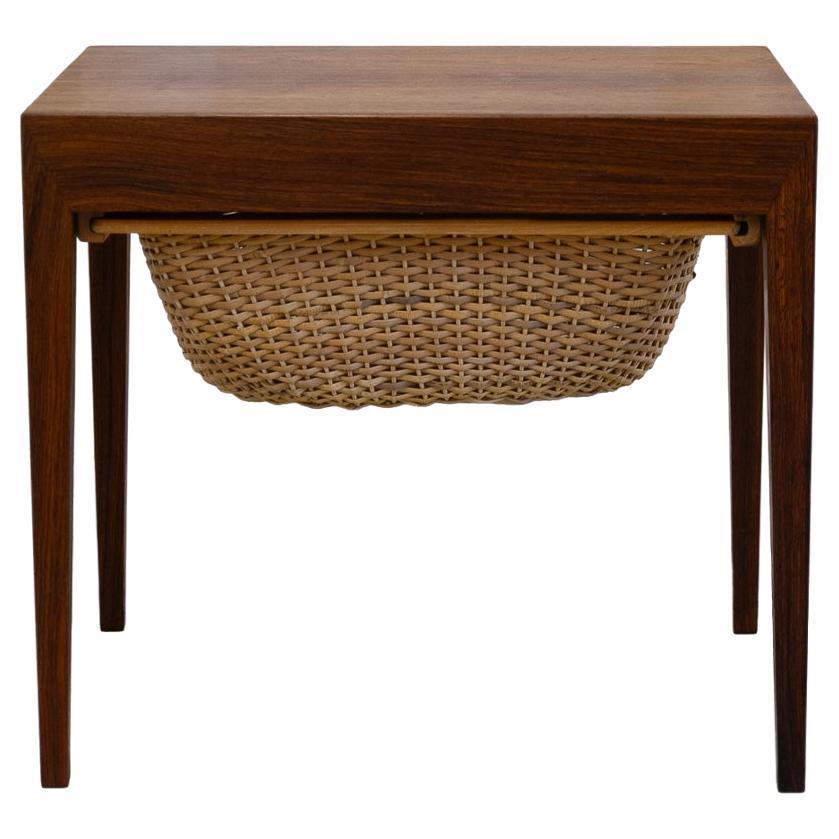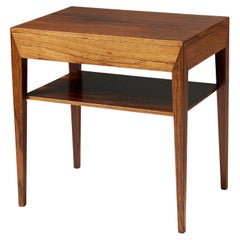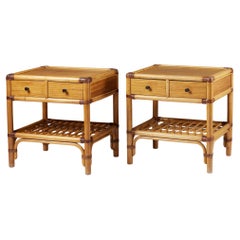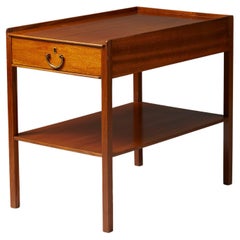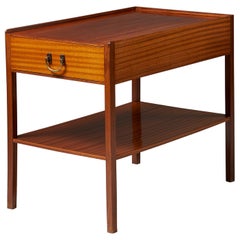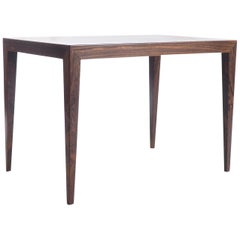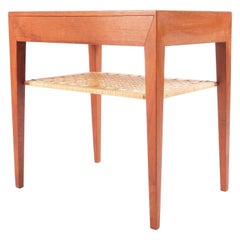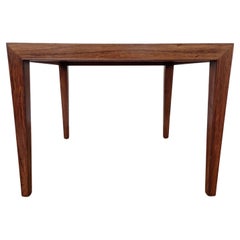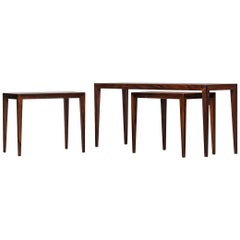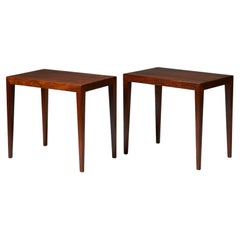
Pair of Bedside Tables by Severin Hansen for Haslev Mobelsnedkeri
View Similar Items
Want more images or videos?
Request additional images or videos from the seller
1 of 9
Pair of Bedside Tables by Severin Hansen for Haslev Mobelsnedkeri
About the Item
- Creator:Haslev Mobelsnedkeri (Designer)
- Dimensions:Height: 17.52 in (44.5 cm)Width: 12.6 in (32 cm)Depth: 19.3 in (49 cm)
- Sold As:Set of 2
- Style:Mid-Century Modern (Of the Period)
- Materials and Techniques:
- Place of Origin:
- Period:
- Date of Manufacture:20th Century
- Condition:
- Seller Location:Stockholm, SE
- Reference Number:1stDibs: LU1006625429462
About the Seller
5.0
Recognized Seller
These prestigious sellers are industry leaders and represent the highest echelon for item quality and design.
Established in 1998
1stDibs seller since 2013
199 sales on 1stDibs
Typical response time: 5 hours
Authenticity Guarantee
In the unlikely event there’s an issue with an item’s authenticity, contact us within 1 year for a full refund. DetailsMoney-Back Guarantee
If your item is not as described, is damaged in transit, or does not arrive, contact us within 7 days for a full refund. Details24-Hour Cancellation
You have a 24-hour grace period in which to reconsider your purchase, with no questions asked.Vetted Professional Sellers
Our world-class sellers must adhere to strict standards for service and quality, maintaining the integrity of our listings.Price-Match Guarantee
If you find that a seller listed the same item for a lower price elsewhere, we’ll match it.Trusted Global Delivery
Our best-in-class carrier network provides specialized shipping options worldwide, including custom delivery.More From This Seller
View AllSide Table Designed by Severin Hansen Jr. for Haslev Möbelsnedkeri, Denmark
By Severin Hansen Jr.
Located in Stockholm, SE
Side table designed by Severin Hansen Jr. for Haslev Möbelsnedkeri.
Denmark, 1950s.
Rosewood.
Stamped.
Measures: H: 50 cm
W: 50 cm
D: 35 cm.
Category
Mid-20th Century Danish Mid-Century Modern Side Tables
Materials
Rosewood
Pair of mid Century rattan bedside tables for DUX, Sweden
By Dux of Sweden
Located in Stockholm, SE
Pair of bedside tables, anonymous for DUX,
Sweden, 1960s.
Cane, rattan, teak and metal.
The colonial-style combination of bamboo, rattan, cane, and wood makes this Scandinavian bed...
Category
Vintage 1960s Swedish Mid-Century Modern Side Tables
Materials
Metal
Bedside Table Model ‘914’ Designed by Josef Frank for Svenskt Tenn, Sweden
By Josef Frank
Located in Stockholm, SE
Bedside table model 914 designed by Josef Frank for Svenskt Tenn,
Sweden, 1950s.
Mahogany veneer and brass handle.
Josef Frank’s elegant bedside table model 914 with sophisticated ...
Category
Mid-20th Century Swedish Mid-Century Modern Side Tables
Materials
Brass
Bedside Table Model 914 Designed by Josef Frank for Svenskt Tenn, Sweden, 1950s
By Josef Frank
Located in Stockholm, SE
Bedside table model 914 designed by Josef Frank for Svenskt Tenn,
Sweden, 1950s.
Mahogany veneer and brass handle.
Josef Frank’s elegant bedside table model 914 with sophisticated brass handles is one of Svenskt Tenn’s timeless classics. It works very well combined with modern or antique pieces. The overall simplicity of form and use of luxurious wood are characteristic of Josef Frank.
L: 65 cm
W: 40 cm
H: 55 cm
Josef Frank was a true European, he was also a pioneer of what would become classic 20th century Swedish design and the “Scandinavian Design Style”.
Austrian- born Frank started his design career as an architect after having trained at the Technische Hochschule in Vienna between 1903 and 1910. After his training he went on to teach at Kunstgewerbeschule (The Viennese School of Arts and crafts) where he developed and espoused the new school of modernist thinking towards Architecture and Design that was coming to fruition in Vienna at the time. He also went on to lead the Vienna Werkbund throughout the 1920s. This was a truly progressive group of Architects and Designers who set about improving the daily lives of Austrian people through modernist design and architecture in partnership with Arts and Crafts ideals and construction. Frank’s leadership of the Werkbund had already cemented his place at the forefront of European design.
Frank’s time in Vienna was typified by his design for the “Die Wohnung” exhibition of the Deutscher Werkbund in Stuttgart, 1927 where he exhibited along side his contemporaries at the forefront of design, such as the likes of Le Corbusier and Walter Gropius. Here he showed a specially designed pair of flat-roofed reinforced concrete houses in what is now seen as a typical modernist style.
What separated Frank’s house from the other 32 houses of the exhibition was the interior and furniture inside the building. It was described as “Neo-Classical” and filled with an eclectic mix of period pieces, modern design and pieces designed by Frank himself that seemed to cross the two worlds. This was a complete opposite direction to that which his fellow Architects were travelling in with their pared back and angular aesthetics. Frank said of his own work: “The house is not a work of art, simply a place where one lives,” and by this reasoning Frank rejected the regimental mechanisation of the living space that his contemporaries believed in, instead he set about creating congenial and spontaneous interiors. Frank’s practice saw him placing the bright colours and the soft forms of nature back into the furnishings and interiors that he thought modernism sorely mist.
Frank, along with Oskar Walch set up Haus und Garten in Vienna in 1925. This was Frank’s first commercial foray into furniture and home furnishings and the company went on to become the most influential furnishing house in Vienna with a riotous depth of colour and interesting shapes becoming the trademark of their design. However this success was to come to an end with rise of Nazism in Vienna in the early 1930’s. Frank was Jewish, and he and his wife Anna decided they would leave Vienna for her motherland: Sweden, in 1933. Frank continued to design for Haus and Garten, visiting Vienna occasionally and designing the pieces that would continue to be the company’s best...
Category
Vintage 1950s Swedish Mid-Century Modern Side Tables
Materials
Brass
1960s Swedish Rattan and Wood Bedside Tables – DUX Design, Mid-Century Modern
Located in Stockholm, SE
Pair of bedside tables, anonymous for DUX,
Sweden, 1960s.
Cane, rattan, teak and metal.
The colonial-style combination of cane, rattan, and teak makes this Scandinavian bedside tab...
Category
Mid-20th Century Swedish Mid-Century Modern Side Tables
Materials
Metal
1960s Swedish Rattan and Wood Bedside Tables – DUX Design, Mid-Century Modern
Located in Stockholm, SE
Pair of bedside tables, anonymous for DUX,
Sweden. 1960s.
Cane, rattan and teak.
The colonial-style combination of cane, rattan, and teak makes this Scandinavian bedside table desi...
Category
Mid-20th Century Swedish Mid-Century Modern Side Tables
Materials
Cane, Rattan, Teak
You May Also Like
Side Table by Severin Hansen for Haslev Møbelsnedkeri, Denmark
By Severin Hansen, Haslev Mobelsnedkeri
Located in Goteborg, SE
The design of Severin Hansen is usually very elegant. And this table is no exception. Just look at these fine proportions and precise joints.
Category
Vintage 1960s Danish Scandinavian Modern Side Tables
Materials
Rosewood
Side Table Designed by Severin Hansen for Haslev Møbelsnedkeri, Denmark
By Severin Hansen, Haslev Mobelsnedkeri
Located in Goteborg, SE
The furniture factory Haslev Møbelsnedkeri had it's own very distinct style developed by their chief designer Severin Hansen. This small side table in teak and cane is a very good ex...
Category
Vintage 1950s Danish Scandinavian Modern Side Tables
Materials
Cane, Teak
Side Table Designed by Severin Hansen for Haslev
By Severin Hansen, Haslev Mobelsnedkeri
Located in Praha, CZ
- Produced in Denmark.
- Made of rosewood and rosewood veneer. Carefully refurbished.
jr
Category
Vintage 1960s Danish Mid-Century Modern Side Tables
Materials
Rosewood
Severin Hansen Nesting Tables by Haslev Møbelsnedkeri in Denmark
By Severin Hansen
Located in Limhamn, Skåne län
Rare nesting tables designed by Severin Hansen. Produced by Haslev møbelsnedkeri in Denmark.
Category
Vintage 1950s Danish Scandinavian Modern Side Tables
Materials
Rosewood
Side Table Nightstand by Severin Hansen for Haslev, Denmark
By Haslev Mobelsnedkeri, Severin Hansen, Hans J. Wegner
Located in Berlin, DE
Beautiful side table / nightstand designed by Severin Hansen for Haslev, Denmark in the 1960ies.
The side table is in very good original condition. It's ready for usage!.
Category
20th Century German Side Tables
Materials
Cane, Teak
Teak Sewing Side Table by Severin Hansen for Haslev
By Severin Hansen, Haslev Mobelsnedkeri
Located in Philadelphia, PA
Beautiful teak Sewing table with drawer and basket. basket is in excellent condition and the top has had a light refinish. this sewing table is one of my favorite pieces. the detai...
Category
Vintage 1960s Danish Scandinavian Modern Side Tables
Materials
Cane, Teak
